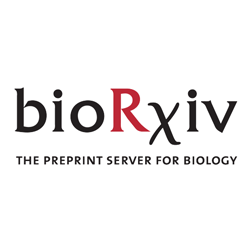
Steve McCarroll
@s_mccarroll
Followers
3K
Following
50
Media
0
Statuses
98
Variation makes biology rich and interesting – let's figure out how it works
Cambridge, MA
Joined October 2011
Excited to share this discovery: Huntington's disease is a DNA process for almost all of a cell's life. Inherited HD alleles are innocuous, just unstable – CAG repeats slowy expand throughout life, acquiring toxicity only when quite long (>150 CAGs).
biorxiv.org
Huntington Disease (HD) is a fatal genetic disease in which most striatal projection neurons (SPNs) degenerate. The central biological question about HD pathogenesis has been how the disease-causing...
10
157
518
Excited to share the paper: Huntington's disease is a DNA process for almost all of a cell's life. Inherited HD alleles are innocuous, just unstable – CAG repeats slowy expand throughout life. We call it a "ticking DNA clock".
cell.com
Single-cell measurement of the Huntington’s disease-causing CAG repeat reveals that somatic expansion of this repeat drives pathological changes in neurons, providing insights into disease progress...
1
37
121
We find that astrocytes, and not just neurons, are contributing to genetic protection and vulnerability in schizophrenia – so their role is active and not merely reactive.
0
1
7
Neurons and astrocytes closely coordinate their gene expression, in a program we call “SNAP” – a collaboration that we find to be central in protection from schizophrenia and cognitive aging. https://t.co/dj0jMklreP
3
33
107
Marmosets have their siblings' microglia – not kidding about this:
biorxiv.org
Chimerism happens rarely among most mammals but is common in marmosets and tamarins, a result of fraternal twin or triplet birth patterns in which in utero connected circulatory systems (through...
2
23
109
To learn how noncoding, polygenic variation shapes phenotypes, we need to find ways to think outside of the enhancer box. Excited to share this effort to do that, work with @danweiner92 @eliserobinson. Check out Dan’s tweetorial! ( https://t.co/fE3r82tEER)
Excited to share our latest work!! We uncover functional convergence of common+rare genetic risk factors for autism around 16p11.2, a region of longstanding mystery in neuropsych research 🧠 🧵 👇 (1/14) https://t.co/W0vUbFFHYG
0
2
6
Excited to share our latest work!! We uncover functional convergence of common+rare genetic risk factors for autism around 16p11.2, a region of longstanding mystery in neuropsych research 🧠 🧵 👇 (1/14) https://t.co/W0vUbFFHYG
medrxiv.org
The dominant human genetics paradigm for converting association to mechanism (“variant-to-function”) involves iteratively mapping individual associations to specific SNPs and to the proximal genes...
4
29
90
Viral pandemics in "cell villages": reveals strong effect of a common protective human genetic variant. Collaboration with @EgganLab @mfwells5 , toward new ways of learning how human genetic variation shapes cell biology. https://t.co/jRNEoY3xX0
biorxiv.org
Variation in the human genome contributes to abundant diversity in human traits and vulnerabilities, but the underlying molecular and cellular mechanisms are not yet known, and will need scalable...
0
5
13
Just out online in Science: our paper together with Po-Ru Loh's lab on the surprisingly large effects that common VNTRs have on many human phenotypes. Common variants with large effects, hiding in plain sight!
science.org
The size and copy number of protein domains within genomes is connected to phenotypes including height, hair morphology, and health biomarkers.
2
95
249
Excited to share this technology for studying cells' synaptic connections alongside their RNA expression. Work led by @your_arpy, now a professor at the Vollum Institute:
biorxiv.org
Brain function depends on forming and maintaining connections between neurons of specific types, ensuring neural function while allowing the plasticity necessary for cellular and behavioral dynamics....
0
18
76
Common variants with large effects on phenotypes – hiding in plain sight! Here we developed ways to analyze VNTRs in large-n human genetics. The strengths of the associations – and what they revealed about genetics and protein domains – astonished us.
biorxiv.org
Hundreds of the proteins encoded in human genomes contain domains that vary in size or copy number due to variable numbers of tandem repeats (VNTRs) in proteincoding exons. VNTRs have eluded analysis...
0
57
177
These results amplify our sense that it is worth thinking about the C4 human-genetics finding in schizophrenia beyond developmental rewiring, e.g. perhaps in terms of pathological states in which the C4 genes become induced by other biology.
1
0
3
Yilmaz et al. also analyzed C4 in the mouse cortex (vs. the 2016 paper in thalamus). Some interesting differences. The C4 k/o had normal numbers of cortical synapses – but C4A over-expression reduced cortical synapse density and increased engulfment of synapses by microglia.(5)
0
0
3
The selective implication of C4A (by human genetics) was surprising at the time, so it's nice to see the biology align with the human genetics so strongly. (4/n)
0
0
3
This result aligns with human genetics findings in schizophrenia (Sekar et al 2016) implicating C4A but not C4B. (3/n)
0
0
1
By introducing the human C4A and C4B genes into mice, Yilmaz et al. reveal biological differences between them: C4A bound synapses more efficiently, and C4A (but not C4B) rescued the visual-system phenotypes of C4 knockout mice. (2/n)
0
0
1
Excited to share this work on activities of complement component 4 (C4) in the mouse nervous system, led by Melis Yilmaz, Esra Yalcin, Jessy Presumey in Mike Carroll's lab. Some thougts to follow (1/n).
5
9
57
Remarkable evolutionary innovations by primates. My favorite: a third of the interneurons in the striatum are a novel type without homolog in mouse or ferret. Excited to share this work from team led by @fennamk with @GordFishell @guoping_feng
nature.com
Nature - Single-nucleus RNA-sequencing analyses of brain from humans, macaques, marmosets, mice and ferrets reveal diverse ways that interneuron populations have changed during evolution.
1
42
117









